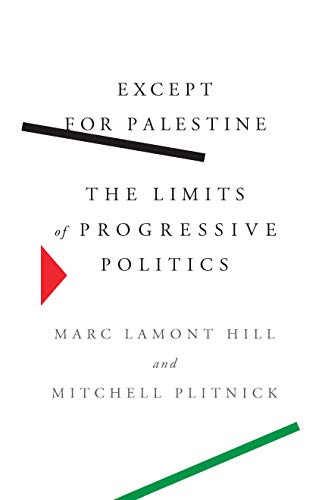Gaza: An Inquest Into its Martyrdom, Norman G. Finkelstein, University of California Press, 2018, pp. 419, ISBN: 978-0-520-29571-1
Just five days ago, Israel unleashed its military might against Gaza yet again after two rockets landed in open areas in Israel, and no casualties nor damage was reported. As it always is, the response was overwhelming, disproportionate, and deliberately so, thanks to the longstanding Dahiya doctrine. As a response to the two rockets, Israel conducted air raids over Khan Younes and Beit Hanoun, while its helicopters bombed Rafah and its tanks targeted Beit Lahia in the east. That comes amidst a pandemic that cripples countries that do not suffer from an ongoing occupation and blockade nor the consequences of devastating wars that have left their infrastructure in ruins. Gaza was and remains at the mercy of the Israeli authorities. Each year, due to the inadequacy of healthcare infrastructure, 9000 Gazans require exit permits (to be granted by Israel) for treatment that is unavailable locally, including patients with cancer. Currently, according to an article published by the medical journal The Lancet, Gaza has 87 intensive care unit beds with ventilators for a population of 2 million. In 2017, it was estimated that a quarter of the total population lives in emergency shelters with other families, sites favourable to an easy spread of the virus. COVID-19 pandemic has merely increased the suffering imposed on Gaza, compounded by the water and electricity crisis and rampant poverty. Unfortunately, and as always, its suffering has fallen by the wayside due to other more media-friendly disasters that do not interfere with the Israel brand. They are condemned to suffer in silence.
One consistent voice that has advocated on behalf of Palestinians has been Norman Finkelstein. His books have penetrated through the thick propaganda that shrouds the conflict and distorts its image. His forensic examination of the evidence of Israeli brutality spans decades and has put him at odds with establishment academia in the US. He entered the scene forcefully with his note-by-note and reference-by-reference destruction of Joan Peters’ From Time Immemorial, a book that had previously gone through 10 printings and been praised by the who’s who of politics. The book alleged that Palestinians were simply immigrants who came to Israel from the surrounding Arab countries after it had made the desert bloom and had no legitimate claim to the territory. Finkelstein’s Ph.D. thesis, subsequently incorporated into his Image and Reality of Israel-Palestine Conflict, systematically exposed the book as a fraud that it was, which drew ire by the pro-Israel academia that eventually ended in the termination of his appointment at DePaul University in Chicago. Finkelstein’s refusal to back down against the tsunami of insults, mischaracterizations, threats and other such attempts to silence him is a worthy testament to his strength of character, but more importantly, the quality of his research. As he has explained in a documentary about himself American Radical, and elsewhere, his parents’ experience of the Holocaust in the Warsaw ghetto had a profound impact on him and has led him to fight the just war, pursuing truth, even if it led to his own demise.
Finkelstein has also taken on Daniel Goldhagen and his Hitler’s Willing Executioners for diminishing the moral significance of the Nazi Holocaust through its dubious scholarship and lurid conclusions. The Holocaust Industry sent shockwaves globally when it was published in 2000. It claimed that there was the Nazi Holocaust, the authentic experience of the Jewish people in WWII, and the industry that was subsequently built on its memory and exploited for ideological benefits, a topic he also took on in his Beyond Chutzpah. His ostensibly iconoclastic scholarship is construed as partisan, but a look at detailed notes and meticulous references of any of his works affirms his guiding dictum. Norman Finkelstein lets the evidence speak for itself, and thus is the case with his Gaza: An Inquest Into its Martyrdom.
In his newest book on Israel and Palestine, Finkelstein revisits the topics and extends the analysis of his two previous works, Method and Madness (2014) and This Time We Went Too Far (2011). These books analyzed the causes and consequences of Israel’s invasion and destruction of Gaza, and Gaza similarly, as Finkelstein states, “is about what has been done to Gaza.” It sets to “refute that Big Lie by exposing each of the little lies” for “if the evil is in the detail, it can only be confronted and disposed of in methodical parsing of logic and evidence.” It is a difficult book to read, certainly not due to Finkelstein’s clear and coherent style, but because Gaza is a “human-made human disaster” and the horrors with which the reader is faced require patience to persevere and refuse to throw away the book in indignation at the sheer brutality with which decisions are made to inflict untold suffering on others.
Finkelstein resorts to careful parsing of on the ground reporting done by organizations such as Amnesty International, Human Rights Watch, B’Tselem and others and contrasts it with official state responses and media representations. He presents two contrasting views, one which details intentional violence, destruction, disproportionality, and illegality and the other which seeks to gloss over them and justify them as necessary or simply erase them. While Israel seeks to justify its actions as a necessary consequence of attacks by Hamas and other organizations in Gaza, Finkelstein traces the origins of violence to the political success of Hamas at the 2006 elections, deemed “completely honest and fair” by Jimmy Carter himself. Israel reacted by tightening the blockade and bringing the economy to a standstill, effectively placing sanctions on the occupied population. Immediately following the consolidation of Hamas’ power in Gaza in 2007, after foiling an attempted coup, the US and Israel, with tacit agreement by the EU, demanded that Hamas renounce violence and directed political demands at the organization without providing anything in return. A cease-fire was brokered in June 2008 between Israel and Hamas, however, only to be violated by a border raid by Israel, which augured “Operation Cast Lead.” What followed were the standard claims of self-defence by Israel, disproved by the highly skewed ratio of dead and injured Palestinians and captured and incarcerated combatants or civilians and the destruction of Gaza’s infrastructure. Gaza was effectively punished for its political choice under cover of Israel’s right to self-defence and deterrence capacity.
As with “Operation Protective Edge” in 2014 and “Pillar of Defense” in 2012, Israel sought to stymy Palestinian political pragmatism by provoking a reaction through its blockade and cross-border raids and attacks. Finkelstein shows how Palestinians were increasingly aligned with the global opinion on the conflict, accepting a two-state solution and forming a united political front. Before 2012, the Organization of Islamic States, including Iran, proposed a peace initiative which was to normalize relations of all member states with Israel in return for Israel’s withdrawal from all territories occupied after June 1967, a just solution to the issue of Palestinian refugees, and acceptance of an independent state in Palestine, in West Bank and Gaza Strip, with East Jerusalem as its capital. In 2007, the PA chairman accepted the proposal, and Hamas’ leader abstained from voting, implying his acceptance. Finkelstein shows that by intervening, Israel acted to prevent a consensus from forming and ensured its continued occupation and domination over the Palestinians. This was to be repeated in 2014 when Fatah and Hamas formed a united government, a political decision that resulted in “Operation Protective Edge.” The government was poised to accept and recognize Israel’s existence, past agreements, and renounce violence, which would have exposed Israel’s violent unilateralism and laid bare its unwillingness to end the occupation. Even the persistent repetition by Israel’s leaders of Hamas’ desire to destroy Israel is contradicted by Hamas’ removal of this from their manifesto before elections in 2006 and stated commitment to political solutions. This certainly does not vindicate Hamas of its responsibility for human rights violations in Gaza proper, but it does reveal that it is Israel who refuses political engagement.
Finkelstein also engages with the mainstream media and human rights organization to uncover their attempts at whitewashing Israel’s assaults and attempts to prevent publicity about the situation in Gaza. He contrasts claims by Israel that Hamas uses human shields and purposely fires rockets from residential buildings by citing Amnesty International’s report, which provides that “AI found no evidence that Hamas or other Palestinian fighters directed the movement of civilians to shield military objectives from attack.” This is but one of the necessary attempts by Israel to portray Gaza as a true battlefield, for only if it were a battlefield, it could justify Israel’s actions and excesses. Mainstream media similarly echoed and editorialized Israel’s concerns, which Finkelstein duly deconstructs. It is indeed bizarre that the sheer level of destruction and death wreaked on Gaza could somehow find justification and sympathy for the perpetrator rather than the victims. In the 22 days of “Operation Cast Lead,” according to Israeli B’Tselem, 1391 Palestinians were killed in Gaza by Israel, of whom 344 were children, and 110 were women, while Palestinians killed three Israeli civilians and five security forces. Other operations had similar or worse statistics, but the point is not to bid on the number of victims and plead inequality as if equality in deaths is sought. No, the point is that no Israeli and no Palestinian should die. However, this is often missed in media reporting, and Gaza’s civilians are often assumed to be legitimate military targets contrary to international humanitarian law.
Finkelstein shows that human rights in the Israel-Palestine conflict are circumscribed by political power and ideological expediency. Thus respected journals, editors, directors and organizations are quick to praise Israel’s respect for the rule of law, its democratic credentials and care to avoid casualties despite the evidence to the contrary, even if collected and reported by the organizations they head. In an infuriating episode of complicity, Finkelstein shows how Amnesty International based some of its conclusions on official Israeli military statements even if their own investigation proved otherwise. On July 17, 2014, IDF struck Al-Wafa rehabilitation hospital in eastern Gaza City, a hospital catering to those most in need and in which $3 million was invested to help around 2000 patients per year. The Geneva Convention, its protocols and customary humanitarian law grant hospitals and other medical sites protection in times of conflict. The hospital was targeted multiple times and was ultimately destroyed under the pretext that it was used as a command center by Hamas, and Israel supplied footage supporting its claims. Immediately after, International Solidarity Movement in Gaza revealed that the evidence supplied by Israel did not show Al-Wafa, but an entirely different site. Amnesty accepted Israel’s reasoning and held that the status of the hospital was an open question, thereby absolving Israel. These reports contribute to the understanding of the conflict and have an immense impact on public opinion. They also reveal the power of states committing acts of violence to shape facts according to their needs. The book also revisits the notorious recantation by judge Richard Goldstone, who headed the UN inquest into “Operation Cast Lead.” He succumbed to pressure and issued a refutation of his own report, which found that Israel committed multiple war crimes and crimes against humanity in its 2008-2009 invasion. The facts remained the same, yet the jurist was forced to change his opinion.
Finkelstein’s books on Palestine are printed memories of pain and injustice. His scholarly activism reveals the brutality of the occupation, its illegality and its intentionality. It portrays a people, the Palestinians, who are left at the mercy of one of the world’s most powerful armies and the world that turns its back on them. None of the people who oppose Finkelstein do so on the grounds of his inadequate research, but on ideological grounds with blinders over their eyes. His research is never disputed. Finkelstein ends his book how I believe this and other books of his will be remembered in posterity:
“Perhaps one day in the remote future, when the tenor of the times is more receptive, someone will stumble across this book collecting dust on a library shelf, blow off the cobwebs, and be stung by outrage at the lot of a people, if not forsaken by God then betrayed by the cupidity and corruption, careerism and cynicism, cravenness and cowardice of mortal man.”




